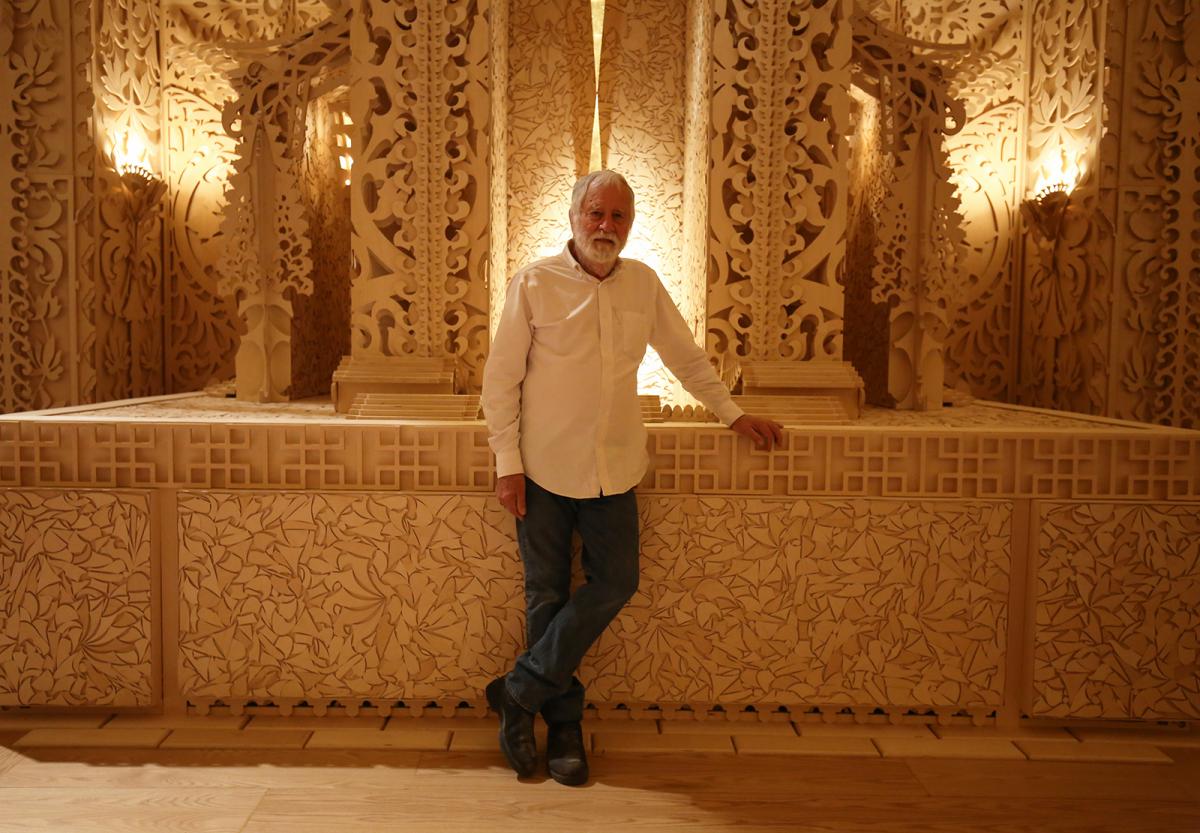
David Best began building temples about twenty years ago, in response to the tragic death of a friend he was mentoring, Michael Hefflin, a Shakespearean actor and sword fighter. They were building a three-wheeled motorcycle for Burning Man when Hefflin went out on his own motorcycle one night and crashed. At the cemetery, Michael's friends said, "Michael would have wanted us to go out to the desert." They were two weeks away from Burning Man. According to Best, "These kids had never had death before. It was a new thing for them." They continued to work on the structure, which was turning into a tribute to Hefflin. At Burning Man, the structure became a way for others to remember people who had died in motorcycle accidents. It would be set on fire and burned.
The next year, Burning Man asked Best to come back and build a temple. The elaborately created structures have become an integral part of the Burning Man experience. Since 2000, Best has designed and coordinated the construction of approximately half of the Burning Man temples. These massive yet incredibly intricate structures are ephemeral. Participants adorn the temples with memorials and inscriptions before burning the structure, an act that is meant to inspire healing and community. As Best describes them, they are "sacred spaces for people to reflect on loss."
Visitors to #NoSpectators: The Art of Burning Man are invited to leave their own inscriptions in the Temple on small wooden plaques.
Learn more about the artists and artworks featured in the exhibition: No Spectators: The Art of Burning Man.
Related blog posts: Discover the Art of Burning Man at the Renwick, Who Wore it Better? Burning Man Dresses up the Renwick, Sneak Peek: Burning Man Unfolds at the Renwick, Here Be Dragons, Feel the Burn: the Art of Burning Man Comes to the Renwick in March


















